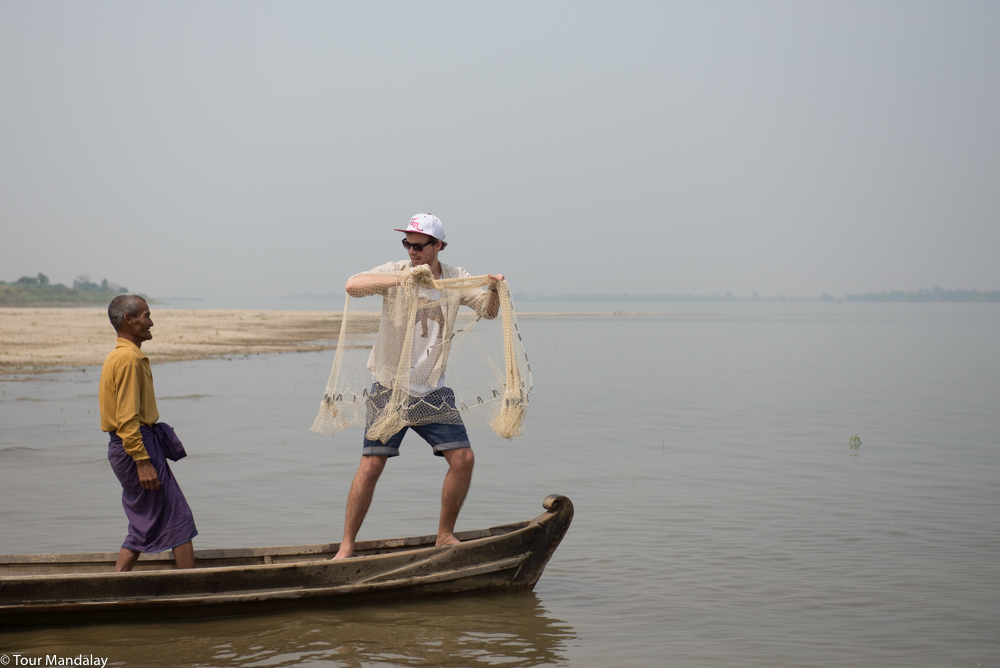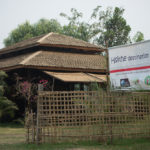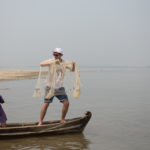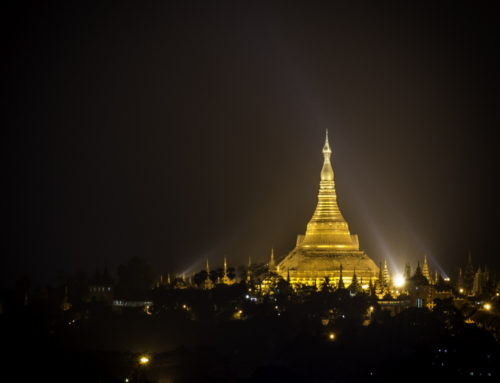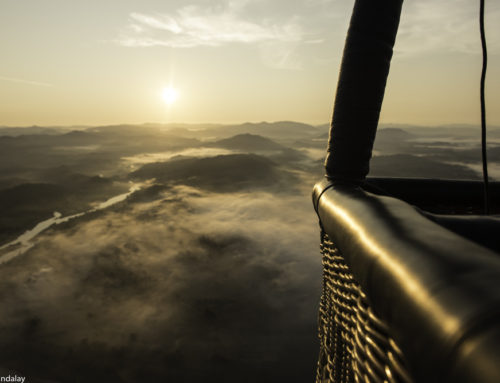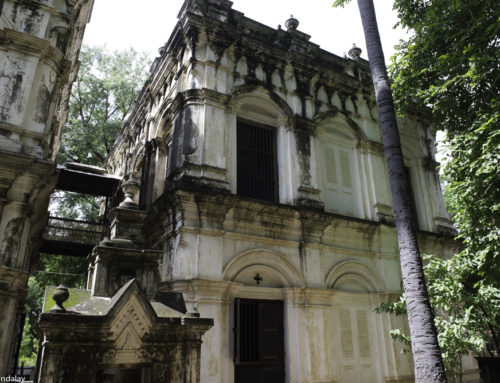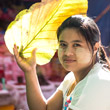- The Hsithe Destination Centre established by teh Harrison Institute
- Hand-crafted souvenirs on display at the Hsithe Vistor Centre
- Learning to cast a traditional lead-weighted fishing net – just make sure you don’t fall in!
The critically endangered Irrawaddy Dolphin, although not indigenous to Myanmar, is a beautiful mammal easily identifiable thanks to its blunt forehand and nose. Records apparently date back to ancient Chinese scriptures from 800AD when they were referred to as “river pigs”. At that time, it is thought this rare aquatic mammal inhabited the water as far west as India and as far east and south as Papa New Guinea. Sadly however, numbers have now reduced so drastically that they can now only be found in three of the world’s rivers: the Irrawaddy in Myanmar; the Mekong in Cambodia and Laos; and the Mahakham in Indonesia. It is likely that a population of less than 60 remain in the Irrawaddy, and 80-100 in each of the Mekong and Mahakham rivers.
With increased reports of dolphins being washed up as a result of pollution and electric fishing, there is clearly more that needs to be done to raise awareness and protect the population of this near-extinct species. NGOs such as the Harrison Institute are doing a great job of this, but in order for them to be truly successful, it is crucial that they receive support from international visitors. By supporting the communities that fish cooperatively with the dolphins, it will be sure to attract attention from both inside and outside of the Myanmar, thus helping to strengthen their voices and help educate other communities nearby.
The journey from Mandalay to Hsithe will take approximately 2.5 hours by car so an early start is unavoidable. Along the way you’ll pass plenty of local scenery, with the distant marble mountain providing a welcome back drop.
On arrival into Singu (the closest accessible village by road), board the waiting boat and travel downstream to the village of Hsithe. Although we can’t guarantee they’ll male an appearance, be sure to keep your eyes peeled for dolphins.
After mooring up at Hsithe, head straight for some shade in the village’s recently constructed Destination Centre. Here you’ll find a brief overview of what the Harrison Institute and its partners are trying to achieve, details of the village, and numerous photographs of the birds that inhabit the area. The centre is also stocked with a small range of quality souvenir items, all of which are designed and produced by the villagers themselves.
After enjoying some light refreshments and snacks, we will then meet with a cooperative fisherman to learn how to prepare and cast the fishing net. After watching a live demonstration, those keen to do so will get the chance to attempt two or three trial throws in the centre’s garden. We will then take the boat across the river to test out our newly acquired skills in shallow water. Seeing as the technique takes a long time to master, it is likely the experience will provide many laughs and great photo opportunities for all involved.
Return to the centre to cool off and enjoy a home cooked lunch prepared by the villagers. After finishing, continue to explore Hsithe village with the help of a resident. This offers a wonderful opportunity to observe the rich cultural practice of the local communities; learn about agriculture (peanut and rice farming); enjoy a first-hand insight into home-based industry (the production of cigars, jam, fishing nets, peanut oil and tailored garments); learn about typical village architecture (houses, barns and monasteries); experience monastic life and naturally converse with a charming elderly monk (assuming he is available to meet of course).
We will then return to the boat via the Visitor Centre, which will be the last chance to purchase any local handicrafts. Items include carved dolphins, dolphin summoning sticks (fisherman tap these on the side of their boats to communicate), recycled bag, mini fishing nets and local produce such as mango jam, honey, cheroots and spices. (PLEASE NOTE: Any money spent on souvenirs goes directly to the village making this a great opportunity to stock-up on quality souvenirs whilst giving back at the same time).
The boat will then return upstream to Singu, where your car will be waiting to escort you back to Mandalay. This will also be the last chance to spot any dolphins, so fingers crossed some will be around to provide a memorable send-off.
(PLEASE NOTE: There is no guarantee you will see dolphins on this tour, but your involvement will help with conservation efforts and provide much needed monetary support to the fisherman that cooperatively fish with them).
To book this experience, or to find out more information, please write to us now at info@tourmandalay.travel.

